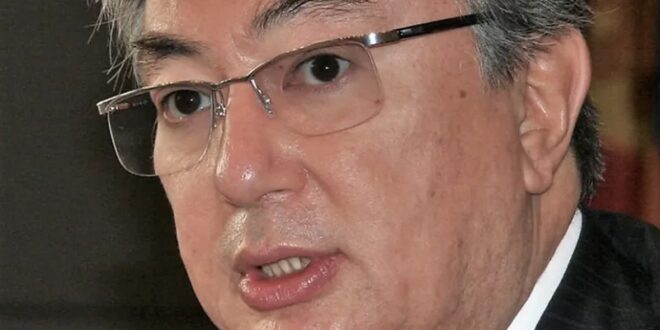The main result of the January 2022 Kazakhstan protests was to solidify the transfer of power from Nursultan Nazarbayev to Kassym-Jomart Tokayev that began with the latter’s assumption of the Kazakh presidency in 2019. While there are still many unknowns relating to the protests, which led to at least 225 deaths, President Tokayev responded by initiating a crackdown against top Nazarbayev supporters and promising to enact major economic reforms.
Tokayev’s ability to forestall another protest wave will depend on his ability to distance himself from the corruption associated with the Nazarbayev regime and to create a modern welfare state.
The protests began in the western city of Zhanaozen after the government lifted a cap on liquefied petroleum gas prices, aggravated by pandemic-related labour unrest and long-term grievances relating to inequality. The protests quickly spread across the country, with the most violent clashes occurring in Almaty, Kazakhstan’s largest city. The speed with which the protests spread and the degree of violence unleashed by both pro- and anti-government forces caught many off-guard, including President Tokayev.
The survival of Tokayev’s regime was far from guaranteed until it counter-attacked with significant force and (primarily Russian) Collective Security Treaty Organisation peacekeepers were rapidly deployed. It wasn’t long before Kazakh officials began talking about a foiled coup. Despite limited evidence linking the violence in Almaty to Nazarbayev supporters, some of his loyalists were arrested.
While Nazarbayev’s personal involvement is still unclear, his former prime minister and security chief, Karim Massimov, was charged with treason. Removing Massimov, whose background and ties with China made him a potential rival for the presidency, allows Tokayev to reshape Kazakh society without facing elite dissent.
The protests in Kazakhstan were based on local grievances, which were aggravated by the COVID-19 pandemic. While popular discontent has been brewing in Kazakhstan for years, the economic consequences of the pandemic might have pushed many otherwise politically apathetic citizens onto the streets.
When the effects of the pandemic wane, the government will be better positioned to use its substantial energy resources to pacify much of the discontent. Whether those resources will be used to deal with Kazakhstan’s inequality is less certain. Strengthening the rule of law without giving a greater role to civil society and a more independent press has rarely worked in similar countries.
If it is true that Nazarbayev’s loyalists played a major role in unleashing the violence, then the crackdown against those loyalists and Russia’s open support for the Tokayev regime can be used to distance Tokayev from the corruption associated with Nazarbayev and his inner circle. There seems to be genuine popular support behind ‘de-Nazarbayevification’. Cracking down on corruption carried out by Nazarbayev’s supporters should buy Tokayev enough good will to make people overlook his regime’s own shortcomings in that area.
The Kazakh public’s perception of the crackdown is harder to gauge. Those closest to the protesters are aware of the violence used by the authorities, including against those protesting peacefully. This is likely to create tensions in Almaty for the foreseeable future. The popular desire for stability and the government’s control over information should limit the damage to Tokayev’s legitimacy as long as he is able to return a sense of normalcy. If the crackdown expands beyond Nazarbayev’s inner circle, the Kazakh government will have traded short-term stability for long-term resentment.
Russia’s role in ending the protests will remain a source of anger in nationalist circles. Russian politicians talking about Kazakhstan in terms previously reserved for Ukraine will not be well received. But the mostly symbolic use of Russian peacekeepers and their quick withdrawal should minimise the degree of anti-Russian enmity.
As Russia wields its newfound influence behind closed doors, most Kazakh citizens will focus on more immediate concerns. Given the substantial ethnic Russian minority in northern Kazakhstan and Russia’s role as the guarantor of the Tokayev regime, Kazakh elites will be careful not to add fuel to the anti-Russian sentiment.
Several of the causes of the Kazakh protests — the economic consequences of the pandemic and the corruption linked to Nazarbayev — won’t have the same effect in the future if Tokayev continues his current path. The crackdown against the main Nazarbayev allies should prove to be popular and the Kazakh government is unlikely to cut back on social protections for the foreseeable future.
The large-scale violence against Almaty protesters will create lasting local problems, but the broader fallout should be limited. Russia’s role in the protests will harm Tokayev’s legitimacy with the nationalist segment of the population, but that damage should decrease over time. Removing the proximate causes of the protests doesn’t address the systemic problems of inequality and corruption, neither of which are likely to be resolved in the context of Kazakhstan’s current political model. Another wave of protests based on a future misstep by the government cannot be ruled out. Protests have already resumed in Zhanaozen, this time over a lack of jobs.
 Eurasia Press & News
Eurasia Press & News




